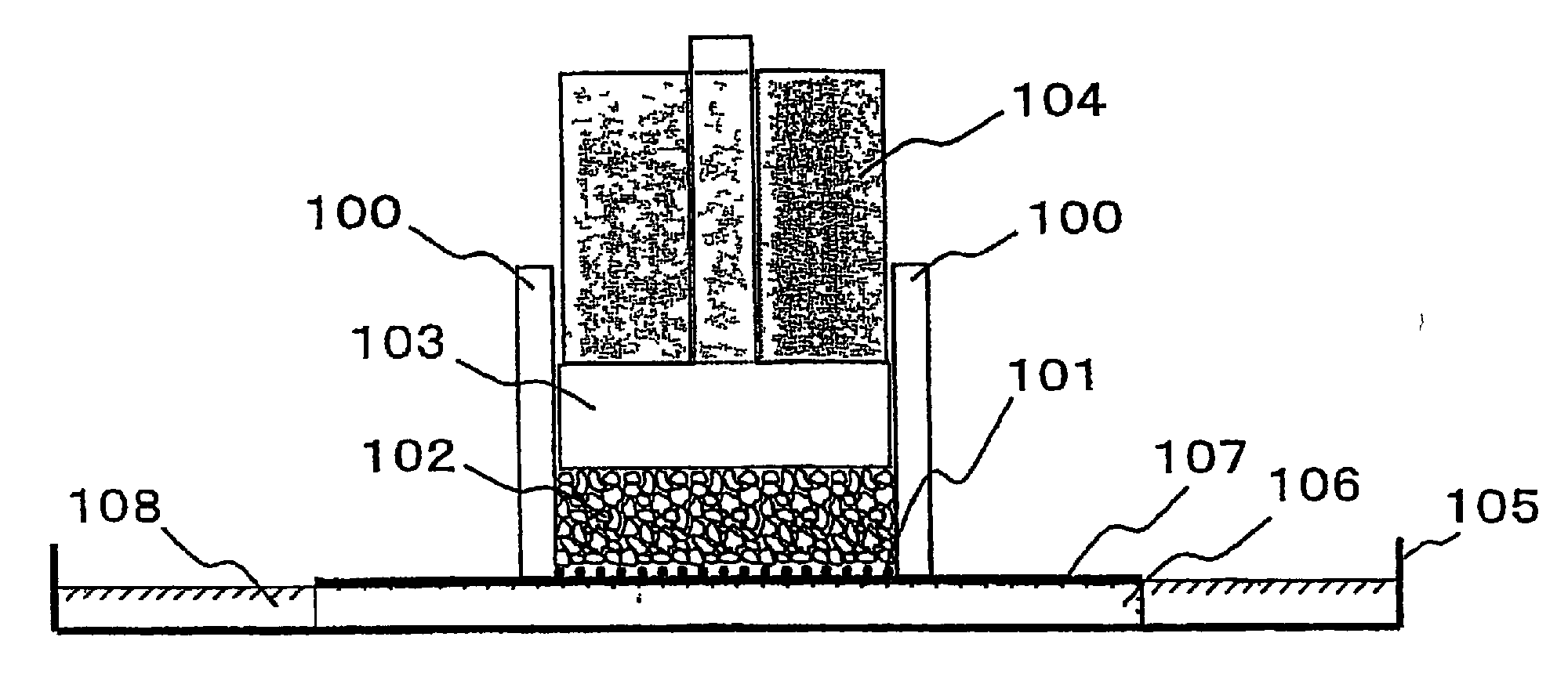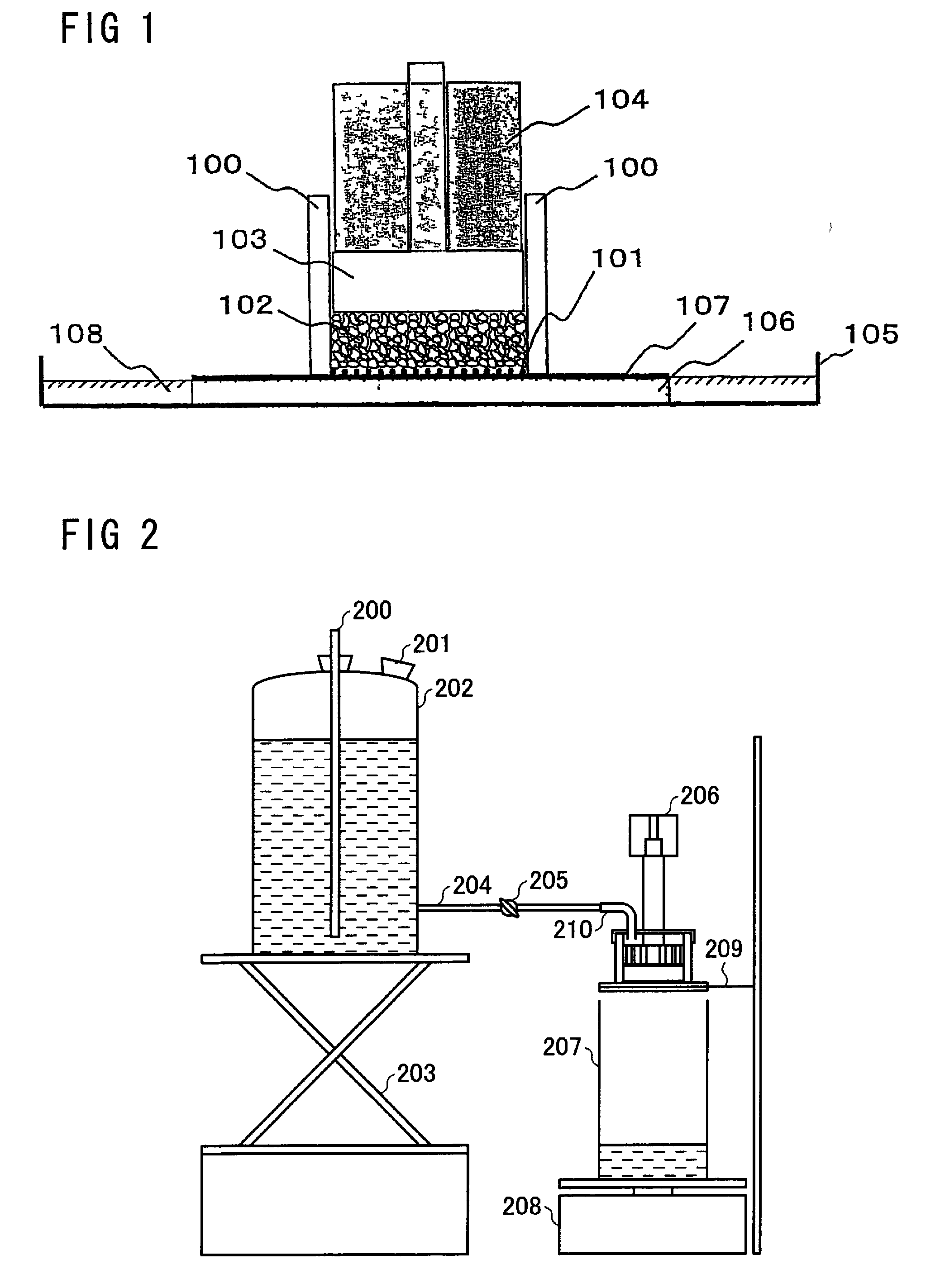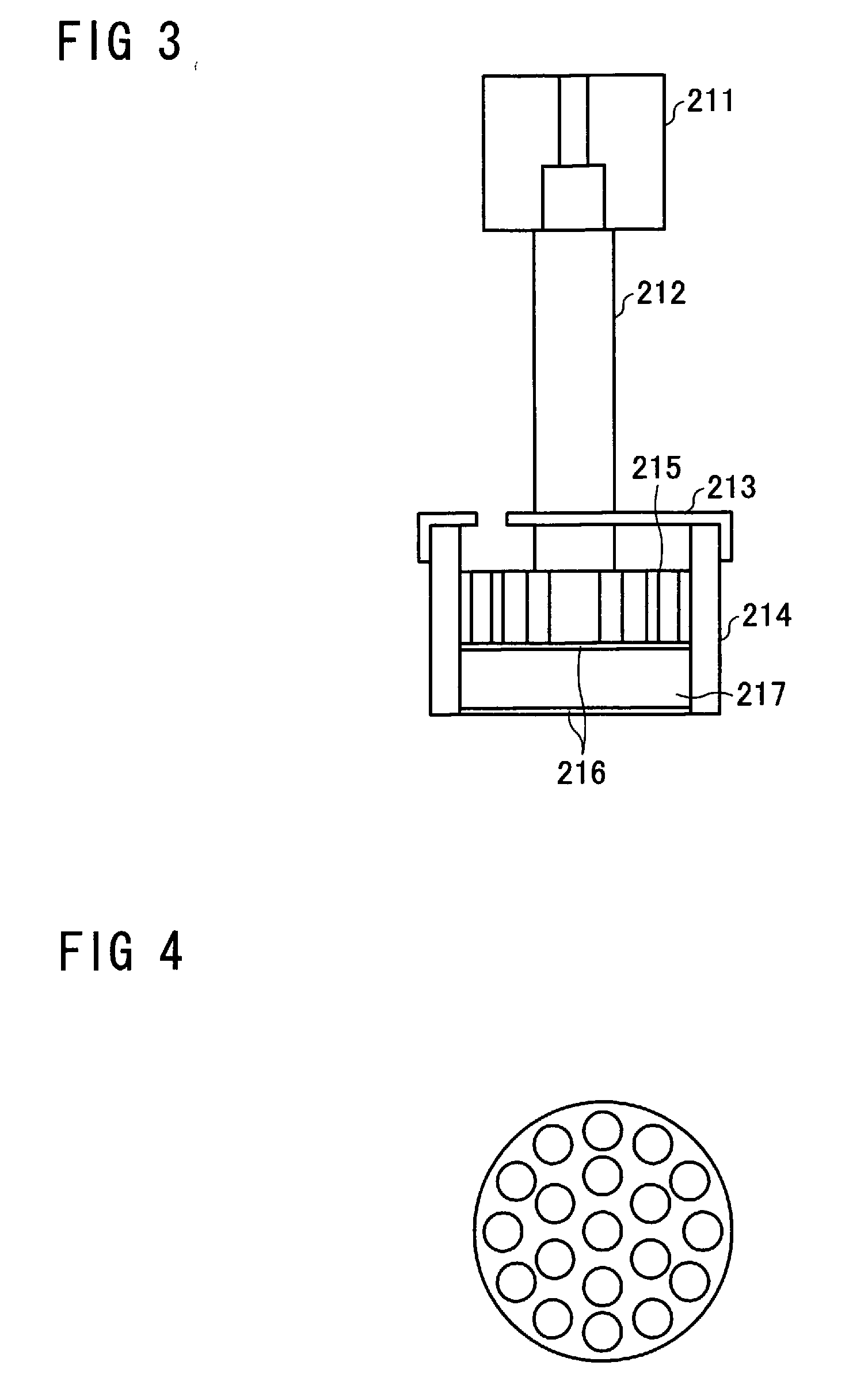Aqueous-liquid-absorbing agent and its production process
- Summary
- Abstract
- Description
- Claims
- Application Information
AI Technical Summary
Benefits of technology
Problems solved by technology
Method used
Image
Examples
working examples
[0161]Hereinafter, the present invention is more specifically illustrated by the following Examples of some preferred embodiments in comparison with Comparative Examples not according to the present invention. However, the present invention is not limited to them. Hereinafter, for convenience, the units “weight part(s)” and “liter(s)” may be referred to simply as “part(s)” and “L” respectively. In addition, the unit “weight %” may be referred to as “wt %”.
[0162]The measurement and evaluation methods in the Examples and the Comparative Examples are shown below.
[0163]In addition, unless otherwise noted, the following measurement and evaluation are stated as having been carried out under conditions of a room temperature (25° C.) and a humidity of 50 RH %.
[0164]Incidentally, the following statement is made on the assumption that the water-absorbent resin (particles) or aqueous-liquid-absorbing agent is measured. In addition, in the case where a commercially available water-absorbent res...
example 1
[0206]In a reactor as formed by lidding a jacketed stainless twin-arm kneader of 10 liters in capacity having two sigma-type blades, there was prepared a reaction liquid by dissolving 52.63 g (0.4 mol %) of polyethylene glycol diacrylate and 18.33 g (0.4 mol %) of D-sorbitol into 5,367.3 g of aqueous solution of sodium acrylate having a neutralization degree of 60 mol % (monomer concentration: about 40 weight %). Next, this reaction liquid was deaerated under an atmosphere of nitrogen gas for 20 minutes. Subsequently, 30.19 g of 10 weight % aqueous sodium persulfate solution and 25.16 g of 0.1 weight % aqueous L-ascorbic acid solution were added thereto under stirred conditions. As a result, polymerization started after about 1 minute. Then, the polymerization was carried out in the range of 20 to 95° C. while the forming gel was pulverized. Then, the resultant hydropolymer was got out after 30 minutes from the start of the polymerization. The resultant hydropolymer was in the form ...
example 2
[0211]An aqueous-liquid-absorbing agent (2) was obtained in the same way as of Example 1 except that: the perforation diameter of perforated plate in Example 1 was changed to 6.5 mm. The physical properties of the aqueous-liquid-absorbing agent (2) are shown in Table 1. Incidentally, the resultant aqueous-liquid-absorbing agent (2) had an extractable component content of 1.1 weight % and a bulk density of 5.8 g / ml.
PUM
| Property | Measurement | Unit |
|---|---|---|
| Temperature | aaaaa | aaaaa |
| Percent by mass | aaaaa | aaaaa |
| Percent by mass | aaaaa | aaaaa |
Abstract
Description
Claims
Application Information
 Login to View More
Login to View More - R&D
- Intellectual Property
- Life Sciences
- Materials
- Tech Scout
- Unparalleled Data Quality
- Higher Quality Content
- 60% Fewer Hallucinations
Browse by: Latest US Patents, China's latest patents, Technical Efficacy Thesaurus, Application Domain, Technology Topic, Popular Technical Reports.
© 2025 PatSnap. All rights reserved.Legal|Privacy policy|Modern Slavery Act Transparency Statement|Sitemap|About US| Contact US: help@patsnap.com



